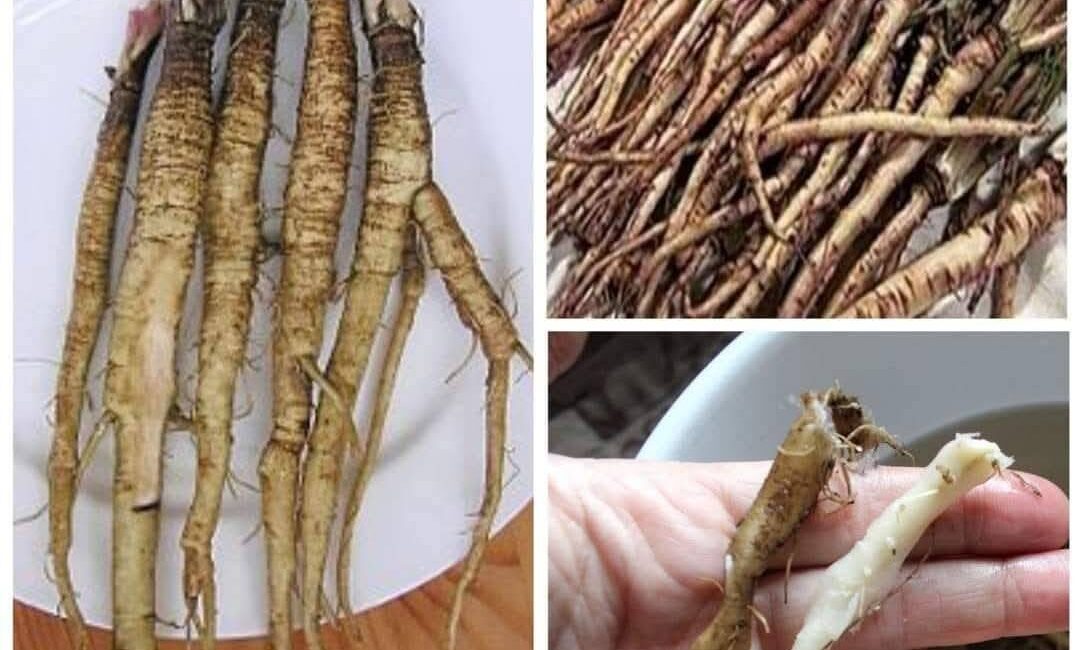Skirret (Sium sisarum) is a perennial herb that hails from the Apiaceae family, the same botanical family as carrots, parsley, and celery. While it has been largely forgotten in modern agriculture, this once-popular root vegetable has a rich history and impressive nutritional profile that could make it a valuable addition to any garden or diet. Over the centuries, skirret has been known for its edible, sweet, and nutty-flavored root, which was once a staple in gardens across Europe and parts of Asia. Despite its historical significance, skirret has fallen into obscurity in the modern era, overshadowed by more commonly known crops like potatoes, carrots, and parsnips.
In this extensive article, we will explore the many facets of skirret, examining its history, cultivation, potential medicinal benefits, and culinary uses. The article will also address the claims surrounding its anti-cancer properties and explore the scientific basis for such assertions.
The History of Skirret: From Ancient Rome to Modern Day
Skirret’s historical significance dates back thousands of years, with early records indicating its cultivation by the ancient Romans. The Roman naturalist and author Pliny the Elder mentioned skirret in his encyclopedic work Natural History, noting its importance as a food source. This suggests that skirret was not only valued for its taste but also for its practical use in Roman gardens and kitchens.
During medieval times, skirret was widely grown across Europe, particularly in monastic gardens where it was prized for its versatility and its medicinal properties. It was often consumed as a vegetable in soups, stews, and pies, and was sometimes boiled, mashed, or roasted like potatoes. In fact, skirret was such a common and beloved vegetable that it even appeared in the royal gardens of England during the Tudor period. Skirret’s sweetness made it a popular choice for both savory and sweet dishes, and it was often used in pies and other pastries.
However, over the centuries, as new crops like the potato became more widespread and easier to grow, skirret slowly fell out of favor. Its decline in popularity was further exacerbated by the rise of industrialized farming practices, which favored high-yield crops that were easier to cultivate and harvest. Despite this, skirret was still cultivated in some parts of Europe into the 18th and 19th centuries, though it was increasingly seen as a novelty or a crop of the past.
Skirret’s Nutritional Profile: A Rich Source of Vitamins and Minerals
Skirret is a nutrient-dense vegetable that offers a variety of essential vitamins and minerals. Its roots are rich in carbohydrates, making it an excellent source of energy. Unlike potatoes, which are primarily composed of starch, skirret contains a higher percentage of sugars, giving it a natural sweetness that distinguishes it from other root vegetables.
Below is an in-depth look at the nutritional benefits of skirret:
1. Carbohydrates and Energy
Skirret is rich in carbohydrates, particularly in the form of simple sugars and starch. This makes it an excellent source of quick energy. The root contains approximately 15–20% carbohydrates by weight, making it a good option for those needing a quick energy boost. Unlike more starchy root vegetables, skirret has a delicate sweetness that makes it suitable for both savory and sweet dishes.
2. Dietary Fiber
Like many root vegetables, skirret is a good source of dietary fiber. Fiber is essential for digestive health, as it helps regulate bowel movements, prevents constipation, and supports the growth of beneficial gut bacteria. The fiber content in skirret helps to slow the absorption of sugars in the bloodstream, making it a potentially helpful food for individuals looking to regulate their blood sugar levels.
3. Vitamins and Minerals
Skirret is a rich source of several key vitamins and minerals that are essential for good health:
- Vitamin C: This powerful antioxidant supports the immune system, helps the body absorb iron, and promotes healthy skin. Vitamin C also plays a crucial role in the synthesis of collagen, a protein that maintains skin elasticity and the health of blood vessels and bones.
- B Vitamins: Skirret is a source of several B vitamins, including B6 (pyridoxine), B1 (thiamine), and B2 (riboflavin). These vitamins play important roles in energy metabolism, brain function, and the maintenance of healthy skin and nerves.
- Iron: Skirret contains a small amount of iron, an essential mineral that helps transport oxygen in the blood and supports the immune system. Iron is especially important for individuals with anemia or those who follow plant-based diets, as it helps prevent iron deficiency.
- Magnesium and Potassium: These minerals are vital for heart health. Magnesium helps maintain normal muscle and nerve function, while potassium supports healthy blood pressure levels by balancing the effects of sodium in the body.
4. Antioxidants and Phytochemicals
In addition to its vitamin and mineral content, skirret contains various antioxidants and phytochemicals that may help protect the body against oxidative stress and reduce the risk of chronic diseases. These compounds help neutralize free radicals, which are unstable molecules that can cause cellular damage and contribute to the development of conditions like heart disease, cancer, and neurodegenerative diseases.
Skirret and Its Medicinal Properties
Historically, skirret has been used in folk medicine for a variety of ailments. While there is limited scientific research specifically on skirret, the plant’s medicinal properties are likely related to its rich content of vitamins, minerals, fiber, and antioxidants. Below are some of the traditional medicinal uses of skirret:
1. Digestive Health
Skirret has been traditionally used to promote digestion and alleviate constipation. Its high fiber content helps regulate bowel movements and supports the growth of beneficial bacteria in the gut. Additionally, skirret has been used as a mild diuretic, helping to flush excess fluids from the body and reduce bloating.
2. Anti-inflammatory Effects
Like many plants in the Apiaceae family, skirret contains compounds that have anti-inflammatory properties. Chronic inflammation is a contributing factor to a variety of health problems, including arthritis, cardiovascular disease, and cancer. By reducing inflammation, skirret may help alleviate the symptoms of these conditions and promote overall health.
3. Blood Sugar Regulation
Although more research is needed, skirret has been traditionally used to help manage blood sugar levels. Its fiber content may help slow the absorption of sugar into the bloodstream, which can help stabilize blood sugar levels and prevent spikes that can lead to insulin resistance and diabetes. Some studies on similar root vegetables have shown promising results in this regard, though more studies are needed to confirm skirret’s effectiveness.
4. Detoxification
Skirret has been used in folk medicine as a natural detoxifying agent. The plant is believed to promote the elimination of toxins and waste products from the body, helping to support the liver and kidneys in their detoxification processes.
Skirret’s Role in Cancer Prevention: Myths and Facts
The claim that skirret can destroy cancer cells in just 48 hours and is 100 times more effective than chemotherapy is, unfortunately, unsupported by credible scientific evidence. While skirret contains antioxidants and compounds that may have potential health benefits, there is no research to suggest that it can directly target and destroy cancer cells in such a dramatic manner.
However, plants like skirret contain antioxidants such as flavonoids and phenolic compounds, which have been shown in some studies to exhibit anti-cancer properties. These compounds may help prevent the formation of cancer cells by neutralizing free radicals and reducing oxidative stress. But it is important to note that these effects are typically modest and are not a substitute for conventional cancer treatments.
Cancer treatment involves a comprehensive approach that may include chemotherapy, radiation, surgery, and targeted therapies. While plant-based foods like skirret can play a supportive role in promoting overall health and reducing cancer risk, they are not a cure for cancer.
How to Grow and Use Skirret
Growing skirret in your garden is relatively easy, as it is a hardy perennial that can thrive in a variety of soils and climates. Here are some tips for growing skirret:
1. Planting Skirret
Skirret is typically grown from root cuttings or divisions, as it does not produce seeds that are easy to propagate. Plant skirret in well-drained soil in a sunny or partially shaded location. The plant prefers moist conditions but can tolerate some drought once established.
2. Harvesting Skirret
Skirret is ready for harvest in late fall or early spring, depending on your climate. The roots are best harvested after the plant has had a chance to mature, typically two to three years after planting. To harvest, carefully dig around the plant and lift the roots out of the soil.
3. Culinary Uses
Skirret can be used in a variety of dishes. The roots can be boiled, mashed, roasted, or sautéed. They can also be added to soups, stews, and salads. Skirret’s sweet flavor makes it an excellent addition to both savory and sweet dishes, and its versatility in the kitchen makes it an ideal choice for creative cooking.
Conclusion
Skirret is a fascinating and nutrient-rich root vegetable with a long history of use in both culinary and medicinal traditions. While claims about its cancer-fighting properties remain unproven, it is still a valuable addition to any diet due to its rich content of vitamins, minerals, fiber, and antioxidants. As interest in heirloom vegetables grows, skir
ret may see a resurgence in gardens and kitchens around the world, offering a new generation of gardeners and chefs an opportunity to rediscover this ancient superfood.




